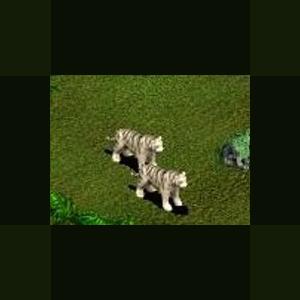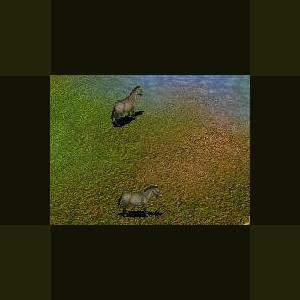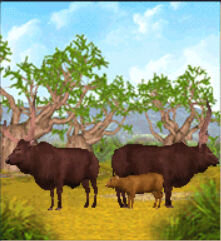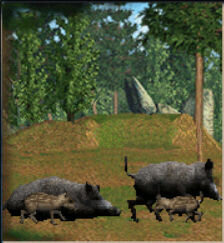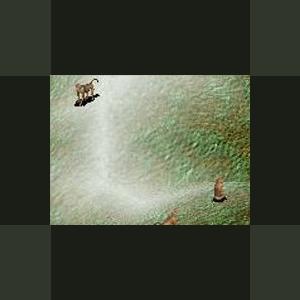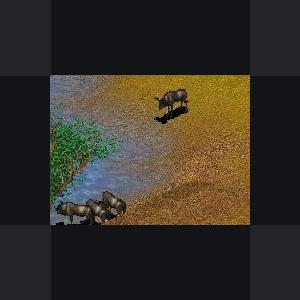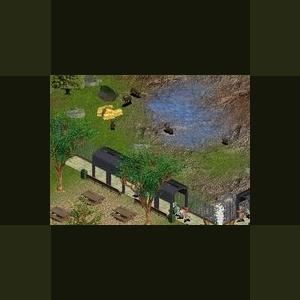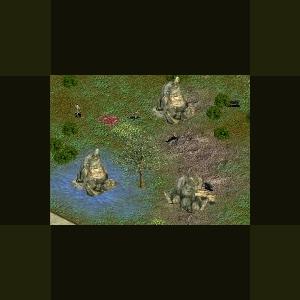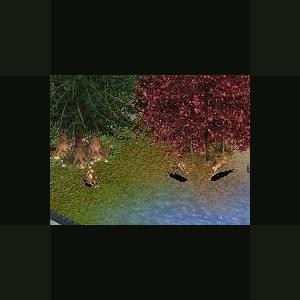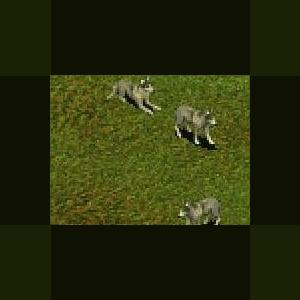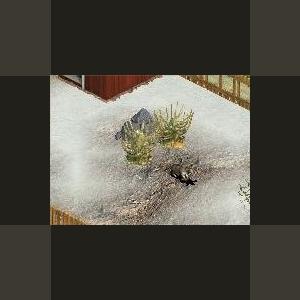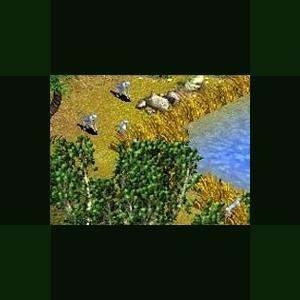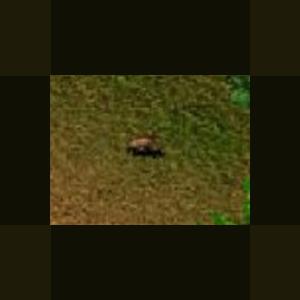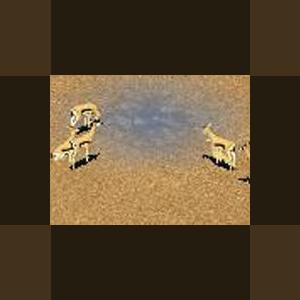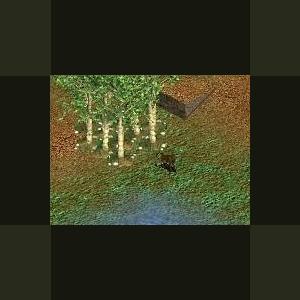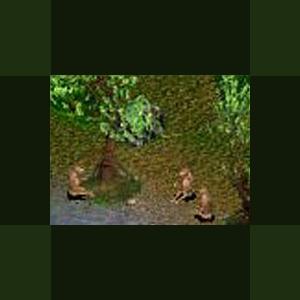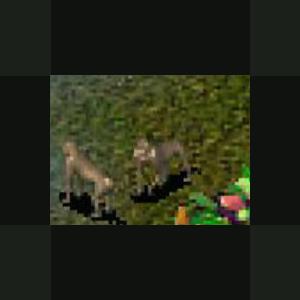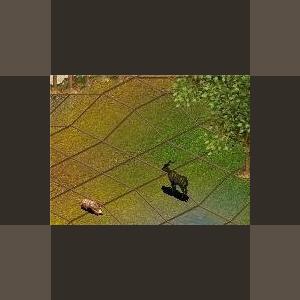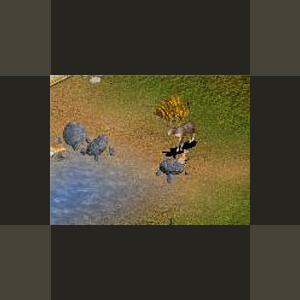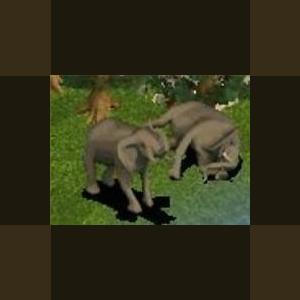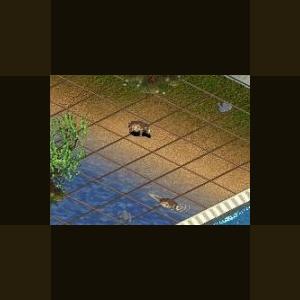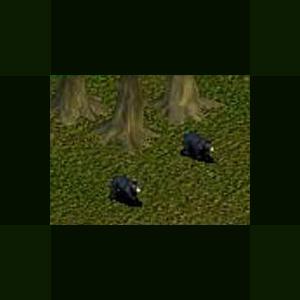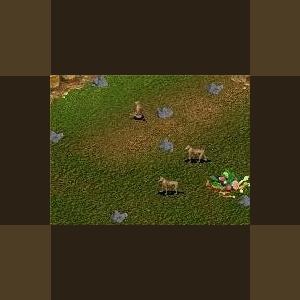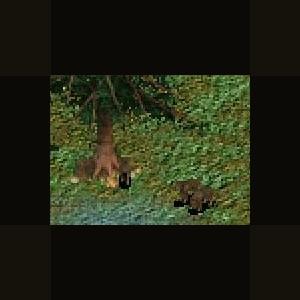279 files
-
Javan Tiger by Moondawg
By Guest
The Javan tiger (Panthera tigris sondaica) was a tiger limited to the Indonesian island of Java.
It now seems likely that this subspecies was made extinct in the 1980s, as a result of hunting and habitat destruction, but the extinction of this subspecies became increasingly probable from the 1950s onwards, when it is thought that fewer than 25 tigers remained in the wild. The last specimen was sighted in 1972. A track count in 1979 concluded that three of the tigers were in existence. However it is possible that it is not extinct, as in the 1990s, there were some unverified reports of sightings.
By 1940, the Javan tiger had been pushed into remote mountain ranges and forests. Some small reserves were set up, but were not large enough, and the quantity of prey species were too low. By the mid-1950s, 20-25 tigers remained on Java. Half of these were in the well-known Ujong Kulon Wildlife Reserve, but the 1960s saw all tigers eliminated from this area and also from Baluran National Park. By 1972, the Javan tiger count was down to a maximum of seven in the newly-formed Meru Betiri Forest Reserve, and perhaps five elsewhere. Meru Betiri was rugged and considered this tiger's last chance for survival. However, even as it was declared a reserve, the area was under attack by agricultural development. A 1979 census located the tracks of only three tigers. Substantiated evidence that this tiger is still alive has not been forthcoming since then. The exact time of extinction remains unknown, but this was probably sometime in the mid-1980s.
Javan tigers were very small compared to other subspecies. Males were between 100 kg (220 lb) and 141 kg (310 lb) on average and around 2.45 m (8.0 ft) in length. Females weighed between 75 kg (170 lb) and 115 kg (250 lb) on average and are smaller than males in length.
Occasional reports still surface of a few tigers to be found in east Java where the forested areas account for almost thirty percent of the land surface. Meru Betiri National Park, the least accessible area of the island, is located here and considered the most likely area for any remaining Javan tigers. This park is now coming under threat from three gold mining companies after the discovery of 80,000 tons of gold deposit within the locality.
Despite the continuing claims of sightings it is far more likely that, even with full protection and in reserve areas, the Javan tiger was unable to be saved. The 'tigers' are quite likely to be leopards seen from a distance.
At the present time the World Conservation Monitoring Centre lists this subspecies as having an 'outstanding query over status' rather than 'extinct', and some agencies are carrying out experiments using infrared activated remote cameras in an effort to photograph any tigers. Authorities are even prepared to initiate the move of several thousand people should tiger protection require this.
But until concrete evidence can be produced (expert sightings, pug marks, photographic evidence, attacks on people and animals), the Javan tiger must be considered yet another tiger subspecies which is probably extinct.
In November 2008, an unidentified body of a female mountain hiker was found in Mount Merbabu National Park, Central Java, allegedly died from tiger attack. Villagers who discovered the body has also claimed some tiger sightings in the vicinity.
Updated 2010-11-03
Just to save space with less in zip and smaller image.
Nothing new.
402 downloads
0 comments
Updated
-
Forest Tarpan by Ghirin
By Guest
Forest Tarpan
Author: Ghirin
The tarpan (Equus caballus gmelini) was the wild horse of Europe and western Asia. There were two basic types: forest and steppe. The forest tarpan was a bit smaller than its steppe counterpart and darker in color. The tarpan is believed to the ancestor of modern light horse breeds.
The forest tarpan lived in most of Europe, dwelling in the forested areas. It became extinct as farmers converted its habitat to farmland and killed tarpans because tarpan stallions would steal domesticated mares for the wild herds. The original wild tarpan died out in the late 1800s.
Two attempts have been made to reconstruct the tarpan from animals of mixed tarpan and domestic background. In Poland, the government has established a feral herd of horses descended from mixed stock in the forest preserve of Bialowieza. With each generation, this herd seems to display more tarpan-like characteristics. The second attempt was by German zoologists. They used primitive breeds of European horses to produce a tarpan-like horse.
The classic features of the forest tarpan include a mouse-dun color with a black stripe down the center of the back and dark legs, semi-erect mane, large head with massive jaws, a thick neck, and tough hooves that do not need to be shod.
Created by Ghirin 2003
Updated 2010-11-03
Just to save space with less in zip and smaller image.
Nothing new
248 downloads
0 comments
Updated
-
Water Buffalo by Khaydar
By Khaydar
Adopt a Water Buffalo (Bubalus arnee) for your zoos.
Water Buffalo description:
Minimum happiness needed for chance of breeding: 90.
Liked foliage:
Rainforest Fern, Mangrove Tree
Liked rock:
Large Rock, Small Rock - Medium, Small Rock - Small
Animal can jump.
Number of animals allowed per exhibit: 3-15 with 20 squares each.
A suitable exhibit for 3 of this animal has 60 squares containing terrain of:
24 Rainforest Floor, 12 Dirt, 12 Grass, 12 Fresh Water
using 7 grid squares filled with 4 Mangrove Tree most liked plant
and using 5 Small Rock - Small most liked rock.
Preferred shelter: Large Stable.
Credits to DutchDesigns for the model
Made by Khaydar
186 downloads
- living animal
- bovid
- (and 1 more)
0 comments
Updated
-
Watusi Cattle by Khaydar
By Khaydar
Adopt a Watusi (Bos taurus africanus) for your zoos.
Watusi description:
Minimum happiness needed for chance of breeding: 90.
Liked foliage:
Tall Grass, Savannah foliage
Animal can jump.
Number of animals allowed per exhibit: 4-15 with 20 squares each.
A suitable exhibit for 4 of this animal has 80 squares containing terrain of:
64 Savannah Grass, 8 Dirt, 8 Fresh Water
using 10 grid squares filled with 4 Tall Grass most liked plant
and 6 small rocks.
Preferred shelter: Large Stable.
Credits to DutchDesigns for the model and mesh
Made by Khaydar
168 downloads
- living animal
- bovid
- (and 1 more)
0 comments
Updated
-
Wild Boar by Khaydar
By Khaydar
Adopt a Wild Boar (Sus scrofa) to your zoos.
Wild Boar description:
Minimum happiness needed for chance of breeding: 90.
Liked foliage:
Weeping Willow Tree, White Oak Tree
Liked rock:
Large Rock, Small Rock - Medium, Small Rock - Small
Number of animals allowed per exhibit: 2-6 with 12 squares each.
A suitable exhibit for 2 of this animal has 24 squares containing terrain of:
11 Deciduous Floor, 2 Dirt, 1 Fresh Water, 4 Grass, 6 Coniferous Floor
using 10 grid squares filled with 4 Weeping Willow Tree most liked plant
and using 6 Small Rock - Small most liked rock.
Preferred shelter: Large Burrow.
Credits to Hendrix for the model and mesh
Made by Khaydar
225 downloads
- living animal
- pig
- (and 1 more)
0 comments
Updated
-
Highland Rhesus Macaque by Ghirin
By Guest
Highland Rhesus Macaque
Author: Ghirin
Rhesus macaques (Macaca mulatta) are very adaptable primates and have a wide range in southern Asia. They have been reported in habitats ranging from sea level to elevations of 2500 meters, including snow, intense heat, near-desert, dense forests and cities.
They will eat a wide variety of foods, including fruit, vegetation, eggs, small animals, insects, crops and assorted human foodstuffs.
Highland rhesus macaques dwell in the countries of Nepal, China, India, and Pakistan.
Created by Ghirin 2003
Updated 2010-11-03
Just to save space with less in zip and smaller image.
Nothing new
323 downloads
0 comments
Updated
-
Black Wildebeast by G2K
By Guest
Black Wildebeast
Author: G2K
The black wildebeest is dark brown to black in color, males being darker in color than females. Both sexes become lighter in coat color in the summer, and develop shaggier coats in the winter. Like the common wildebeest, Connochaetes taurinus, Connochaetes gnou possesses a bushy beard and mane.
Updated 2010-10-30
Just to save space with less in zip and smaller image.
UPDATED July 25, 2009 by genki to fix the following:
- Fixed LCID error, which can cause some people's games to crash.
- Linked to in-game sounds and removed extra, unneeded sounds.
- Cleaned up .uca and fixed some problems that were coming up on the .uca checker.
Update 8 August 2013 to reupload the updated file because the old file was uploaded in 2010 by mistake.
296 downloads
0 comments
Updated
-
Alpine Ibex by Paardjee
By Guest
Alpine Ibex by Paardjee
A different species of ibex for in your zoo.
Alpine ibexes are very cheerfull and lively they'll make your guests very happy
The Alpine Ibex (Capra ibex) commonly called by its French name: bouquetin, by its German name: steinbock, by its Dutch name: steenbok, by its Slovenian name: kozorog, or by its Latin nickname: capricorn—is the species of ibex that lives in the European Alps. The Spanish Ibex (Capra pyrenaica) and the Middle Eastern Nubian Ibex (Capra ibex nubiana) are very close relatives of the Alpine Ibex — the Spanish form is generally considered specifically distinct, but the Nubian is usually considered a subspecies of Alpine Ibex.
Habitat
Being an excellent climber, its habitat is the rocky region along the snowline above alpine forests of the European Alps. They tend to occupy steep, rough terrain at elevations of 6,500–15,000 feet.
Appearance
Male specimens commonly grow to a height of about 1 metre (3 feet) and reach a weight of about 100 kg (220 lb). Females are usually only half the size of males. Apart from size, males can also be distinguished by their prominent beard. Older males will tend to grow beards under their chin. Both male and female ibexes have large, backwards-curving horns although those of the male are substantially larger and can grow to an impressive length of up to 1 m. These horns are used to defend themselves from predators such as wolves, lynxes, bears and foxes. Small kids may also be susceptible to attacks from large predatory birds such as eagles. The Ibex has a brownish grey colouring in the summer which changes during the winter months to a richer, darker brown. It is related to the Nubian and Siberian ibexes.
Foraging behaviour
Ibexes are strictly herbivorous and survive on a diet of grass, moss, flowers, leaves and twigs. If leaves and shoots are out of reach, Ibexes often stand on their rear legs to reach this food. They eat during late afternoon and evening hours, descending at this time from the high steep cliffs and into the lower alpine meadows below. The rest of the day is spent in the higher altitude of the cliffs and hills. This pattern of remaining at higher altitudes during the bright daylight hours helps protect them from predators who do not inhabit such high terrain. In the winter, Ibexes also tend to live at lower altitudes since food is more scarce. The need to drink every few days in the summer causes the Ibexes to seek permanent residence within proximity to a dependable water source during this season. If predators are after them, Ibexes will hide in the rocks of the steep cliffs.
Updated 2010-10-30
Just to save space with less in zip and smaller image.
Nothing new.
334 downloads
0 comments
Updated
-
British Wilderness Pack by G2K
By Guest
This great pack has three animals: the red fox, Black Scottish Cat, and a Scottish Cat, a rock, grass, and gorse.
Scottish Wild Cats are found in the forests and open areas of Scotland and north England.
Red Foxes are found worldwide in a variety of habitats.
Black Scottish wild cats are melanistic forms of scottish wild cats.
Also contains gorse, forest fern and a granite rock.
Updated 2010-10-30
Just to save space with less in zip and smaller image.
24 February 2013 to add the July 2009 update since unfortunately the wrong file was uploaded in 2010 when all files had to be reloaded. The January 2009 update was loaded instead of the July 2009 version.
Updated : Jan 7 2009, to adjust scenery
*UPDATED July 25, 2009 by Genki to fix the following:
- Fixed LCID errors, which can cause some people's games to crash.
- Linked to in-game sounds and removed extra, unneeded sounds.
- Cleaned up .uca and fixed some errors and warnings that were coming up on the .uca checker.
- Foliage (forest fern and gorse) adjusted to make them auto-rotate, and to adjust so that the guests can see over them.
760 downloads
0 comments
Updated
-
Japanese Macaque by Coolperson5
By Guest
Japanese Macaque by Coolperson5
The Japanese Macaque is the farthest northern living non-human primate. They are known for being very smart and copying humans.
Updated 2010-11-03
Just to save space with less in zip and smaller image.
Nothing new.
388 downloads
0 comments
Updated
-
Coyote by LAwebTek
By Guest
Coyote
Author: LAwebTek
The name coyote is a Spanish alteration of the original Aztec name coyotl. The Latin name Canis latrans, meaning barking dog, was given to it by Thomas Say, who published a description of the species in 1833. Since 1967, its official name in Canada, in both English and French, has been coyote. In some parts of Canada coyotes are called "brush wolves." Wolves are much larger and characteristically hunt in packs.
Slimmer and smaller than the wolf, the male coyote weighs from 9 to 23 kg, has an overall length of 120–150 cm (including a 30–40 cm tail), and stands 58–66 cm high at the shoulder. The female is usually four-fifths as large.
The coyote's ears are wide, pointed, and erect. It has a tapering muzzle and a black nose. Unlike most dogs, the top of the muzzle on coyotes forms an almost continuous line with the forehead. The yellow, slightly slanting eyes, with their black round pupils, give the coyote a characteristic expression of cunning. The canine teeth are remarkably long and can inflict serious wounds. The neck is well furred and looks oversized for the body. The long tongue often hangs down between the teeth; the coyote regulates its body temperature by panting.
The paw, more elongated than that of a dog the same size, has four toes with nonretractable claws. The forepaws show a rudimentary thumb, reduced to a claw, located high on the inner side. The claws are not used in attack or defence; they are typically blunted from constant contact with the ground and do not leave deep marks.
The fur is generally a tawny grey, darker on the hind part of the back where the black-tipped hair becomes wavy. Legs, paws, muzzle, and the back of the ears are more yellowish in colour; the throat, belly, and the inside of the ears are whiter. The tail, darker on top and lighter on the underside, is lightly fawn-coloured towards the tip, which is black.
The coyote's fur is long and soft and well suited to protect it from the cold. Because it is light-coloured in winter and dark in summer, it blends in well with the seasonal surroundings.
Like all Canidae, the coyote has, at the root of the tail, a gland that releases a scent. Such glands also exist on other parts of the body. Scent glands often become more active when the animals meet. The coyote's urine has a very strong smell and is used to mark out its territory. Trappers use the secretions when they set traps to attract the coyote.
European settlers found the coyote on the plains, prairies, and deserts of central and western North America. It appeared to prefer open or semi-wooded habitats. However, about the turn of the century, the coyote began a dramatic range expansion that is still in progress.
In Canada, the coyote still inhabits its traditional habitats, the aspen parkland and short- and mixed-grass prairie in the three prairie provinces. However, it has spread north into the boreal forest, west into the mountains, and east into Ontario, Quebec, and the Atlantic provinces. The progress of this dramatic "invasion" has been carefully charted; for example, coyotes established themselves in Ontario about the turn of the century, in Quebec in the 1940s, and in New Brunswick and Nova Scotia in the 1970s. Most astonishing of all, coyotes have recently been discovered in western Newfoundland, apparently having crossed on the ice from Nova Scotia.
The reasons for the coyote's expansion are not fully understood but probably include several conditions created by people: the clearing of forests, provision of carrion from domestic livestock, and the removal of the wolf. The mosaic of grassy fields, brush, and woodlots created by farming areas once covered with unbroken forest has provided attractive habitat for the coyote, as well as several other species like the red fox and raccoon. The coyote has learned to scavenge the carcasses of domestic livestock, much as it still scavenges the carrion left by wolves, where the two species occur together. The removal of the wolf in some areas has meant more to coyotes than the absence of a feared predator. It has meant less competition for many prey animals. For example, in winter, when snow conditions are right, coyotes can themselves kill large ungulates (hoofed mammals), such as deer, that multiply in the absence of wolves. Also, in hard winters, these swollen deer populations run out of food, the deer die of starvation, and the resident coyotes enjoy a food bonanza.
Like the wolf, the coyote's best known trait is its yelping and howling cry, a sequence of high-pitched, ear-piercing bayings. The coyote can also bark, growl, wail, and squeal. Although often silent in daytime, it may make itself heard at any time from sunset to sunrise, and especially at dusk and dawn.
Should there happen to be several coyotes in the same vicinity, the howling of one triggers that of the others, resulting in an impressive concert. Two coyotes howling in unison can create the illusion of a dozen or more. The coyote can also sound farther away than it is.
Scientists are intrigued by the coyote's howling, which seems to be a means of communication. The cry invariably brings a reply, then a sort of commentary followed by another prolonged cry, and finally a volley of raucous yelpings. Is it a cry for food, for a mate, or a proclamation of its territorial claims? Is it just an expression of joy at being alive or of sociability? The coyote is fond of playing with other coyotes, even with its prey before devouring it.
The coyote's senses of hearing and smell are so well developed that a sudden odour or noise can make it change its course in mid-step. Its agility in this respect is incredible, perhaps unique in the animal kingdom.
The coyote is a remarkably hard runner, galloping along at 40km per hour, but capable of reaching 64km per hour. Greyhounds, well known for their speed in running, can catch up with coyotes, but may require quite a long time to do so. Should the need arise, the coyote can swim well.
Coyotes appear to be monogamous, and couples may remain together for several years. Both sexes can breed at one year of age under good conditions, although both sexes usually breed somewhat later in life. During the mating season, males solicit the females' favours. The mating takes place mainly during February-March; gestation lasts from 60 to 63 days.
The coyote uses a den for the birth and early care of its cubs. It may be located at the base of a hollow tree or in a hole between rocks, but most often consists of a burrow in the soil. The coyote prefers to den on the banks of a stream or the slopes of a gorge and usually chooses a concealed spot. It often enlarges an abandoned marmot or badger burrow. The female may prepare alternative lodgings to enable her family to move to another refuge should trouble occur. Earth, pushed toward the entrance, is piled up onto a fan-shaped heap, which the animal skirts when going in or out. The same shelter may be used for several years.
Before the female gives birth, or "whelps," the den is thoroughly cleaned. On average, she bears three to seven pups, covered with fine brown fur, whose eyes remain closed for the first eight or nine days.
The male prowls around and brings food to the entrance as long as the pups do not venture from the den. The adults remove refuse as it accumulates. Weaning begins about one month after birth; thereafter the adults regurgitate half-digested food for the pups.
At about three weeks of age, the pups begin to romp around under the adults' watchful supervision, first inside the shelter, then outside. Should some enemy come too close, the adult utters a special warning bark, then lures the enemy away.
Later, the adults teach the pups how to hunt. When fall comes, the young coyotes may leave their parents to claim their own territory. If there is an abundant food supply, pups may stay with the adults to form packs, or clans.
Although primarily a flesh-eater, the coyote will eat just about anything available. Rabbits and hares are typically dietary staples, as are small rodents. Blueberries and other wild fruits are commonly eaten, in quantity, in summer and fall. Coyotes also eat insects, for example, grasshoppers, when they become available. Where coyotes and wolves live near each other, coyotes scavenge from wolf kills. Carrion from livestock and other sources is important too, especially in winter. Coyotes commonly prey on deer fawns in spring and summer; however, they may also prey on adult-sized deer and other large hoofed mammals during certain snow conditions in winter. Coyotes prey on domestic sheep when they are available, and may take beef calves and domestic poultry, too.
Coyotes have flexible social behaviour and adjust their hunting methods to the prey size and food sources available. Coyotes often hunt small prey animals singly, whereas they hunt large prey and defend large carcasses in groups.
The coyote has numerous foes. Chief among these are people; in some areas, 90% of the deaths of coyotes older than five months are caused by people, whether purposefully with guns, poison, and traps, or accidentally with vehicles and farm machinery. Wolves, black bears, mountain lions, and eagles all prey on the coyote. A Iynx can kill a coyote but will not attempt to do so unless the odds are in its favour.
Parasites and diseases can sometimes lead to death. Common are outbreaks of sarcoptic mange, an infestation by microscopic mites that causes thickening of the skin, loss of hair, and itching. Heartworm and hookworm are other common parasites of coyotes. Coyotes may also suffer from diseases such as distemper, canine hepatitis, rabies, and parvo virus.
2003 LAwebTek
Updated 2010-10-30
Just to save space with less in zip and smaller image.
Nothing new.
Updated 4 March 2011 by Fern to reinstate the file that was updated in 2009 with the following updates:
UPDATED July 25, 2009 to fix the following:
- Made small correction to the .uca
- As there are multiple coyotes with the same ztd name, the ztd name has been CHANGED from coyote.ztd to coyote_LA.ztd.
560 downloads
0 comments
Updated
-
Caribou by Hersheyqwert
By Guest
Caribou by Hersheyqwert
Recolor of the Reindeer. The animations has been deleted when they "flew" or anything else with the sparkles. They need snow, grey stone, grass, freshwater, and some dirt in their exhibits. They like a stable and some elevation. They like both the sage bush and tundra plants.
Updated 2010-10-30
Just to save space with less in zip and smaller image.
494 downloads
0 comments
Updated
-
Vervet Monkey by BigCatKeeper
By Guest
Vervet Monkey
Author: BigCatKeeper
The different types of vervets vary in colour, but generally the body is a greenish olive or silvery grey. The face, ears, hands, feet & tip of the tail are black, but an obvious white band on the forehead blends in with the short whiskers. The males are slightly larger than females and are easily recognized by their turquoise blue scrota.
The vervet is classified as a medium-sized to large monkey. Its tail is usually held up, with the tip curving down. Arms & legs are approximately the same length.
Vervet Monkey created by Bigcatkeeper
Thanks to Professorpaul for some infomation!
Updated 2010-11-11
Just to save space with less in zip and smaller image.
Nothing new.
335 downloads
0 comments
Updated
-
Paca by Ghirin
By Guest
Paca
Author: Ghirin
The paca (Agouti paca) is a large rodent native to the torpical portion of the Americas. The paca's fur is brown with up to four rows of horizontal white spots. The belly fur is white. These animals are solitary and nocturnal. They prefer to live near swiftly-flowing streams. Pacas are frequently preyed upon by large predators such as the jaguar and often swim to escape from danger.
Vital Statistics:
Weight - up to 18 kg.
Habitat - Tropical rainforests, prefers areas near fresh, running water.
Shelter - Simple tubular burrow.
Food -- Fruits, leaves, stems, roots.
Number of offspring - 1.
References:
Walker's Mammals of the World. Nowak, 1999.
Created by Ghirin 2004
Updated 2010-11-05
Just to save space with less in zip and smaller image.
Nothing new.
233 downloads
0 comments
Updated
-
Slender-horned Gazelle by Ghirin
By Guest
The slender-horned gazelle can survive in both stony and sandy desert. Its hooves are broadened for ease of travel over sand and it can obtain all of its water from the plants it eats, but will drink if water is available. Other adaptations for desert survival include the pale pelage and a special structure in the nose for cooling blood.
To avoid the heat of the day, slender-horned gazelles feed during the night and early morning. They range widely in search of food, usually traveling in herds of 3 to 10 animals.
References:
http://www.animalinfo.org/species/artiperi/gazelept.htm
http://www.livingdesert.org/sgslenderhornedgazelle.html
http://www.ultimateungulate.com/Artiodacty...leptoceros.html
Photograph:
http://www.mindspring.com/~zoonet/galleries/gazelle.htm
Updated 2010-11-06
Just to save space with less in zip and smaller image.
Nothing new.
298 downloads
0 comments
Updated
-
Arunachal Macaque by Ghirin
By Guest
Arunachal Macaque by Ghirin
Arunachal macaques live at high elevations in the eastern Himalayas.
The Arunachal macaque (Macaca munzala) is the most recent primate to be described by science. It is native to the Arunachal Pradesh region of India in the eastern Himalayan region. This macaque prefers living in the deep forest, but will come out to raid crops.
*Inspired by the Zoo Tycoon Brains Trust at the Zoo Tek Forums.
Reference: http://www.ncf-india.org/
http://news.bbc.co.uk/1/hi/sci/tech/4101001.stm
Created by Ghirin 2005
Updated 2010-10-30
Just to save space with less in zip and smaller image.
Nothing new.
377 downloads
0 comments
Updated
-
Pig-tailed Macaque by Ghirin
By Guest
The pig-tailed macaque (Macaca nemestrina) is named for its short tail which curves over it's rear in an inverted "C"- form. This macaque dwells in both primary and secondary forests of southeast Asia, including Burma, Malaysia, and Sumatra. Their habitat ranges from coastal wetland forest to dry moutain forest up to 1700 m.
Pig-tailed macaques are mainly fruit eaters, but will also accept seeds and invertebrates as food.
Updated 2010-11-05
Just to save space with less in zip and smaller image.
Nothing new.
246 downloads
0 comments
Updated
-
Rhesus Macaque by G2K
By Guest
Rhesus Macaque
Author: G2K
The Rhesus Macaque is among the most common monkeys in India. It is highly intelligent and has learned to adapt to almost all habitats. These range from near-desert to thick jungles, even mountains above the snowline at 2,500m. In India, where they are considered sacred and left unthreatened, they live successfully in agricultural and even urbanised areas. More than half of the Rhesus Macaques in Uttar Pradesh of Northern India live in cities and towns, raiding cultivated areas and rubbish dumps. In fact, they often become so fearless of humans that they can be a pest or even a danger to humans.
Updated 2010-11-05
Just to save space with less in zip and smaller image.
Nothing new.
297 downloads
0 comments
Updated
-
Mountain Nyala by Jordan
By Guest
Mountain Nyala by Jordan
Mountain Nyala
Large antelope of east Africa.
Updated 2010-11-03
Just to save space with less in zip and smaller image.
Nothing new.
321 downloads
0 comments
Updated
-
White-tail Deer by LAwebTek
By Guest
White Tailed Deer
Author: LAwebTek
http://www.zoo-tek.com/forums/index.php?download=184
Location:
Whitetail can be found in all of the US except California and Nevada; they can also be found in all southern provinces in Canada.
Common Name:
White-tailed Deer, Whitetail, or Virginia Deer
Scientific Name:
Odocoileus Virginianus
Physical Characteristics:
The Whitetail is a small to medium-sized deer. In the summer, the deer is tan or reddish brown and turns to a colder grayish brown in winter. The belly, throat, nose band, and eye ring, are white. The beautiful tail that gives the animal its name is 6-13 in (15-33 cm) with the underside white. The Whitetail will flash this warning when they sense danger and while they run.
Height: 27-45" (68-114 cm)
Weight: Male: 150-310 lb (68-141 kg); Female: 90-211 LB (41-96 kg).
Habitat and Range:
The Whitetail lives across North America on farmlands, brushy areas, woods, and even suburbs where they can find garden vegetation. Once nearly exterminated in the Northeast and Midwest of the US, the deer is now more abundant than ever. It has become the most plentiful game animal in eastern North America. This is due to the hunting restrictions and the decline in number of wolves and Mountain Lions, the Whitetail's main predators.
Behavior:
The Whitetail may be active at any time of the day, with dawn and dusk being the ideal time for sighting the animal. The deer is a beautiful runner with a bounding gate. It reaches top speeds of 35 mph (57km/h). This deer can make vertical leaps of 8.5 feet (2.6 m) and horizontal leaps of 30 feet (9 m). When the deer becomes frightened it snorts through its nose and slowly stamps its hooves, a signal that alerts other nearby deer to danger. When alarmed, the deer flags its tail, displaying a large, bright flash of white. This is the final signal of danger to all the deer and it also helps a fawn follow its mother in flight. The Whitetail does not usually travel in large herds, they are usually seen in groups of 2-10. The bucks and does herd separately most of the year, but in winter they may gather together, or "yard up." Sometimes 150 deer may group in one yard. Yarding keeps the trails passable during heavy snow and protects the deer from predators, there is always safety in numbers.
Breeding & Reproduction:
The mating season varies with the location. In the north, they will breed in November and in the southern areas they usually begin in January or February. The Whitetail is less polygamous than other deer, usually a bucks mates with only a few doe. A young doe bred for the first time usually has one fawn after a gestation of 6.5 months. Thereafter she will have twins and occasionally triplets if resources are abundant.
Care for Young:
Fawns stay with their mother into the fall or winter. The fawns are spotted and can walk within a few hours of birth, but they will remain hidden in tall grasses or brush, waiting silently and still for their mother to return and feed them. The young blend in well with most surroundings because their coats are speckled with white. They begin to lose this camouflage after 9 months. The male fawn will begin growing antlers after several months. A doe and her two-year old fawns is a common sight and easy to identify. However, the doe generally drives off her young before giving birth to another pair.
Diet:
The Whitetail grazes on most green plants, including aquatic ones in the summertime. In autumn, it will find acorns, other nuts, and corn. During winter, it browses in the woods, eating the bark off trees, including the twigs and buds of viburnum, birch, maple, and other conifers.
Programming by LAwebTek
Updated 2010-11-11
Just to save space with less in zip and smaller image.
Nothing new.
732 downloads
0 comments
Updated
-
North African Elephant by Ghirin
By Guest
North African Elephant
Author: Ghirin
http://www.zoo-tek.com/forums/index.php?download=626
The North African Elephant inhabited the area north of the Sahara Desert until about the 4th century A.D., when the animals were exterminated due to over hunting and loss of habitat. This is the elephant used by Hannibal during his attack on Rome. These elephants were also used by the Romans in the arena. These elephants are the same species as the Savannah Elephant, but adapted to the Mediterranean climate of northern Africa
Created by Ghirin 2003
Updated 2010-11-04
Just to save space with less in zip and smaller image.
Nothing new.
381 downloads
0 comments
Updated
-
Aldabaran Giant Tortoise by Jordan
By Guest
Aldabaran Giant Tortoise by Jordan
Giant tortoise from the Seychelles Islands. Loves to swim!
Updated 2010-10-30
Just to save space with less in zip and smaller image.
Nothing new.
538 downloads
0 comments
Updated
-
Sun Bear by Ghirin
By Guest
Sun Bear
Author: Ghirin
The sun bear (Ursus malayanus, Helarctos malayanus) is the smallest species of living bear. It is native to the forests of Southeast Asia, including China, Thailand, Malaysia, Indonesia, and Vietnam. These bears are excellent climbers and spend the day sleeping and sunbathing in trees; they hunt at night.
Sun bears have black fur with a characteristic light-colored mark on the chest. The soles of their feet are free of fur to help in climbiing and they have large, curved claws for climbing, openning insect nests, and defense. These bears also use their long canine teeth to tear open trees to get at the insects hidden inside.
Sun bears eat a wide variety of foods, including insects, friut, honey, eggs, and small vertebrates.
They are solitary animals, with the only regular social group being that of mother and cubs.
Created by Ghirin 2003
Updated 2010-11-06
Just to save space with less in zip and smaller image.
Nothing new.
373 downloads
0 comments
Updated
-
Proboscis Monkey by Jordan
By Guest
Proboscis Monkey by Jordan
Proboscis Monkey
Large-nosed rain forest monkey of Borneo
Updated 2010-11-05
Just to save space with less in zip and smaller image.
Nothing new.
322 downloads
0 comments
Updated
-
Raccoon Dog by Ghirin
By Guest
Raccoon dogs (Nyctereutes procyonoides) are considered by some authorities to be the most primitive members of the dog family. In appearance, they resemble raccoons. Raccoon dogs do display most of the characteristics of other canines; however, they cannot bark. They live in pairs or small family groups of the parents and their cubs. They prefer to live in moist, heavily forested regions and are omnivores.
Raccoon dogs are native to eastern Asia. The species has been introduced to western Eurasia by the fur industry and has become established in its new home.
In Japan, the raccoon dog is called tanuki and features in folks tales and traditional medicines.
Reference:
www.lioncrusher.com
Photograph:
http://www.aoba.sakura.ne.jp/~momoncyo/zoo/animal_raccoon_dog.htm
Created by Ghirin 2003
Updated 2010-11-05
Just to save space with less in zip and smaller image.
Nothing new.
411 downloads
0 comments
Updated

